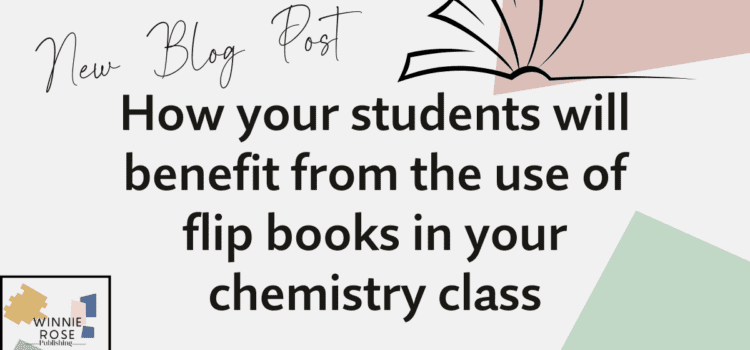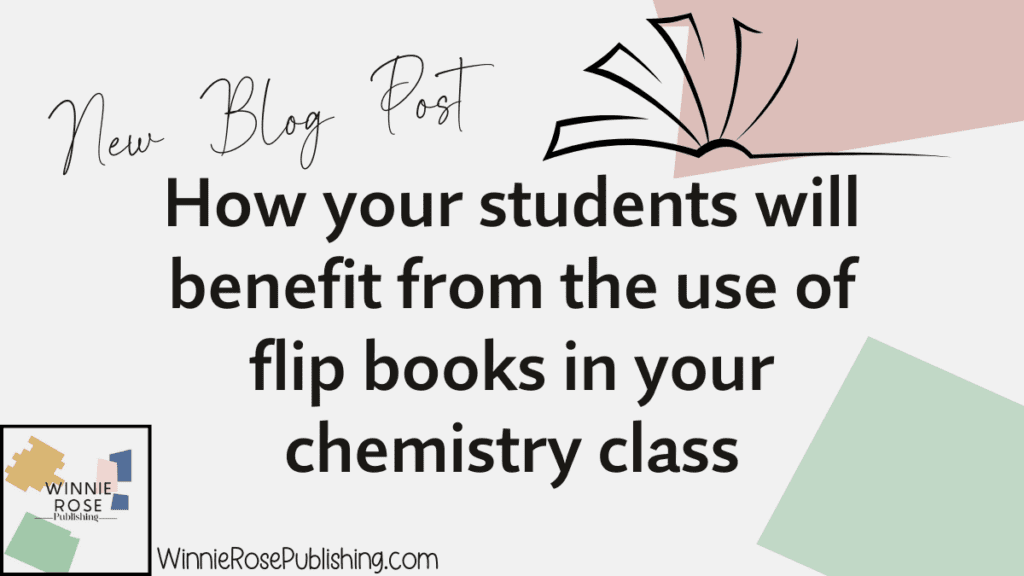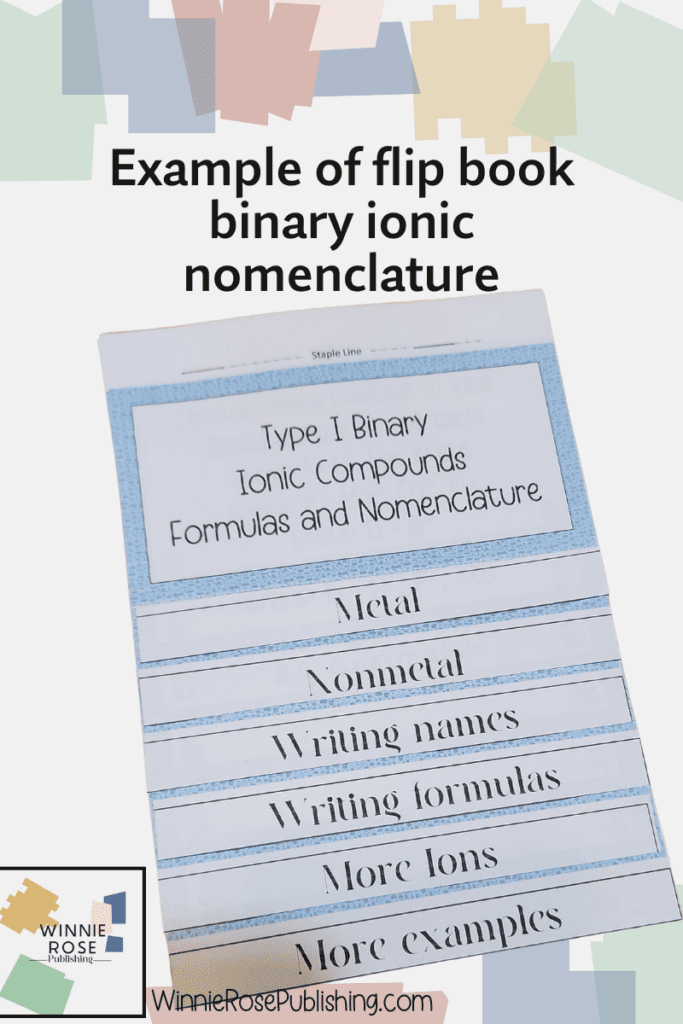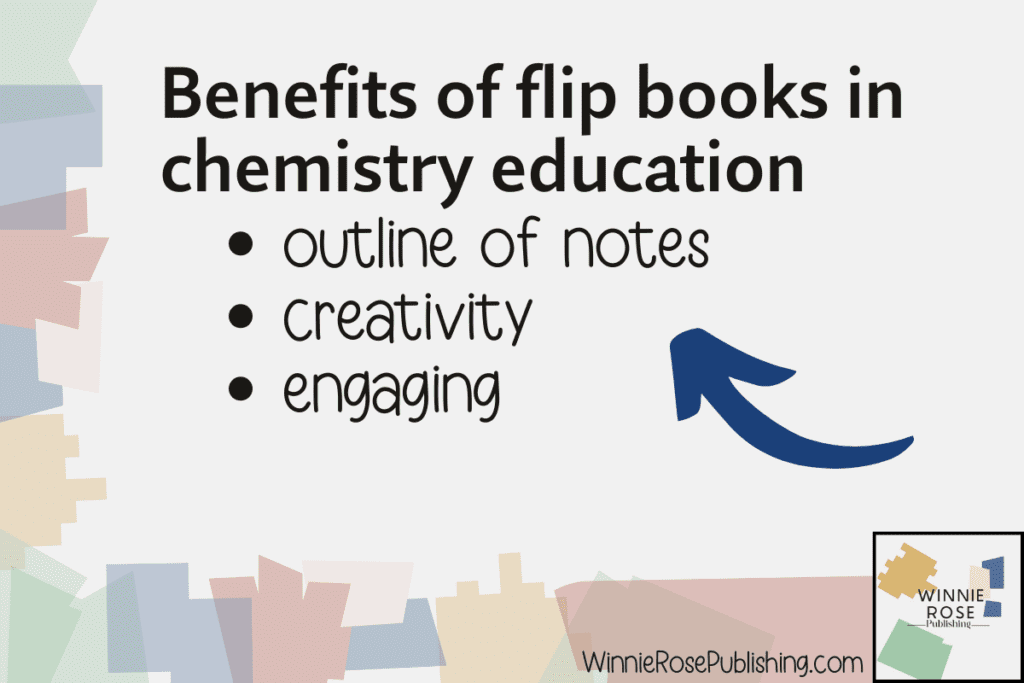
Have you jumped onto the interactive notebooks bandwagon? Students paste foldables and diagrams into a notebook where they also take notes. It allows the student to spend a little time being creative while you can be sure that they have accurate information in their notes. One component of the interactive notebook is the use of flip books.

Flipbooks are multi-page items with concepts or definitions split across several pages. In one small space, the basic rules and definitions of a concept are covered along with some examples. The whole thing is taped into the notebook, so the student has easy access to the material.
Usually there are places to add ones’ own creativity. There may be images in the margins to color, or questions to complete. The student adds their own touches to the document, before cutting out the pages and stapling it together. Finally they tape or paste it into their notebook.

Common features of an interactive notebook
This post is about physical interactive notebooks. Digital interactive notebooks are a separate situation. You can read more about implementing a digital interactive notebook here in this article by Edutopia. Here are the most common things included in an interactive notebook according to Math by the Moutain
- Notes
- Warmup activities
- Foldables
- Flipbooks
- Drawings and diagrams
- Glossary and definitions
- Chart of progress
- Flowcharts
- Table of Contents
Some things are hand written into the notebook. Others are taped ono a page of the notebook. Still others can be tucked into a pocket that the student builds onto a page.
Not every feature is needed. And some teachers believe that lefts sided pages should be dedicated to one type of activity while right sided pages are used for different things. Really it is up to you and what works best for your topic.
But more about the flip books.
There are many benefits to using them. Here are just a few from Pennington Publishing Blog.
- Outline of notes – flip books give a framework of the notes allowing students to add to the material. You can be assured that each student has accurate info in their notebook.
- Engaging – Students are able to express their creativity by coloring and assembling the flip book. Their flip book is personalized to them.
- Focuses on learning and studying simultaneously. As the student organizes the material on the pages, they are organizing the information in their brains as well.
- Encourages neatness and organization. Many students will take pride in their interactive notebook’s appearance.
More reasons to include flip books include these listed by Kristen’s Kaboodle.
- Creativity of both the teacher and the student
- Emphasis and support for the kinesthetic (tactile) learner
- Versatility – nearly any topic can be converted into a flip book
- Specific uses of flip books in chemistry

Any topic that has at least 4 features, rules, or definitions can be a flip book. Put an intro on one page, definitions of terms on the next four pages, and leave a page or two at the end for examples or summary. Here are some ideas to get you started
- Ionic Nomenclature rules – simple binary and polyatomics
- Transition Metal Nomenclature rules (stock nomenclature system)
- Classifying reaction types
- Gas Law equations
- Atomic theory scientists
- Rules for balancing redox equations
- Rules for balancing nuclear equations
Making your own flip books
A quick google search with provide you with some options for templates to make your own flip book. You can make one for yourself pretty easily with the steps below.
- Decide on the size of the largest page of the flip book. Consider the size of the notebook your students will use, and be sure your design will fit.
- Make a rectangle in powerpoint (or google slides) the size you just determined.
- Make an additional rectangle of 0.5 inch or 1 cm smaller in the height dimension compared to the original rectangle.
- Continue making rectangles with each one 0.5 inch or 1 cm smaller than the one before.
- Add content and clip art to each page.
- Leave 0.5 inch or 1 cm at the top of every page
- Place a title at the bottom of each rectangle, making sure it is smaller than the 0.5 inch strip that is visible.

How much detail to provide?
You might prefer to give them a flip book that is complete with information and definitions. All the students need to do is cut, staple, and then tape into their notebook.
Maybe you want them to fill in some info, but stull provide a skeleton of what they should put on each page. Give some info, and vocabulary words and let them fill in the definitions. They can also decorate, assemble, and paste into their notebook.
One option is to create a template of a flip book that is fairly bare-bones, and have students complete their own while filling in their own definitions and examples. Provide colored pencils to allow them to decorate.
Flip books can improve student learning
There is no doubt about it. Students are not good at note-taking. They begin to develop this skill in high school and get much better at it in college. As you teach them how to take notes effectively, you can bridge the gap with flip books. The topic outline is there, and the students fill in the rest. The setup of the flip book content models the structure of good notes on the topic. Students fill in the rest and make it personalized for their notebook.




